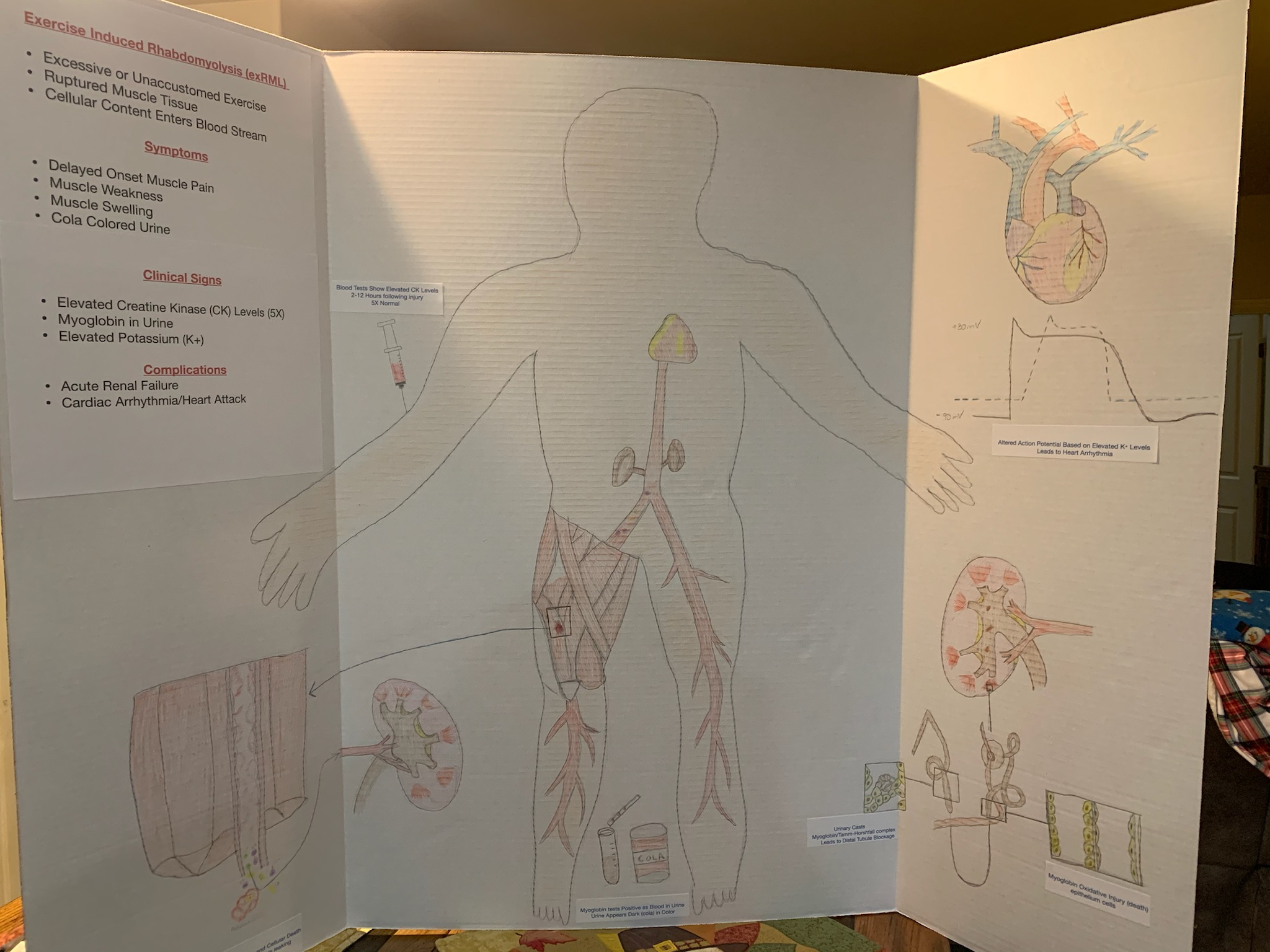My steam project is on exercise induced Rhabdomyolysis (exRML). Rhabdomyolysis is the rapid break down of skeletal muscle tissue due to mechanical, physical, or chemical traumatic injuries. From a cellular level, exRML is caused by an unchecked increase of sarcoplasm Ca2+ levels coupled with a significant depletion of Adenosine Triphosphate. These conditions ultimately lead to cellular death and a resultant spilling of cellular content into the bloodstream. Cellular proteins and ions exposed to the rest of the body through the circulatory system have the potential to create life threatening issues, particularly as it relates to the heart and kidneys.

Exercise Induced Rhabdomyolysis is a chemical, mechanical or physical injury caused syndrome which is characterized by extreme muscle soreness or weakness, swelling, and sometimes discolored urination. ExRML has become more common of an occurrence throughout the sports and weight-lifting competition world, and brought to light the importance of individual safety and limitations. Levels of fitness appear to be primary cause of ExRML, as those who are unaccustomed to suddenly undergoing intense physical exertion to the point of exhaustion are the most susceptible. If ExRML is left undiagnosed or untreated there may be complications to muscle cells of the heart and further problems of the kidneys may arise. Cellularly, ExRML arises due to the depletion of ATP which results and adds to the imbalance of ions across muscle cell membranes. ATP is necessary for the cross-bridge cycle which produces muscle contraction and more importantly the numerous pumps which restore concentration levels for ions inside and out of the cell, ultimately negatively affecting the membrane potential. When ATP is not available, as is the case in ExRML, the membrane potential remains depolarized, calcium ions remain and accumulate within the cell due to the lack of available ATP and result in continuous muscle contraction. Furthermore, Calcium ions present in the cell trigger enzymes which result in the destruction of myofibrils. Serious complications related to ExRML have to do with an increase of potassium levels within the bloodstream, affecting electrophysiological issues of muscle tissue within the heart, and an increase in myoglobin, the filtering of which overworks the kidneys.
What remains is the necessity to understanding those at risk of these conditions surrounding intensive and extensive exercise, and that physical performance at such a high level should be gradually worked toward to reduce putting one’s self or someone else’s health in danger.